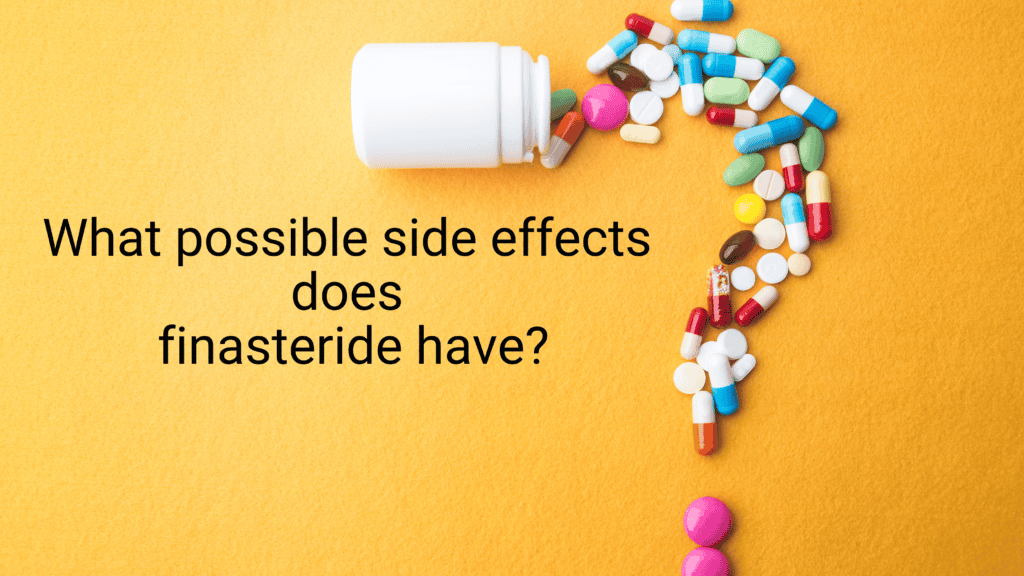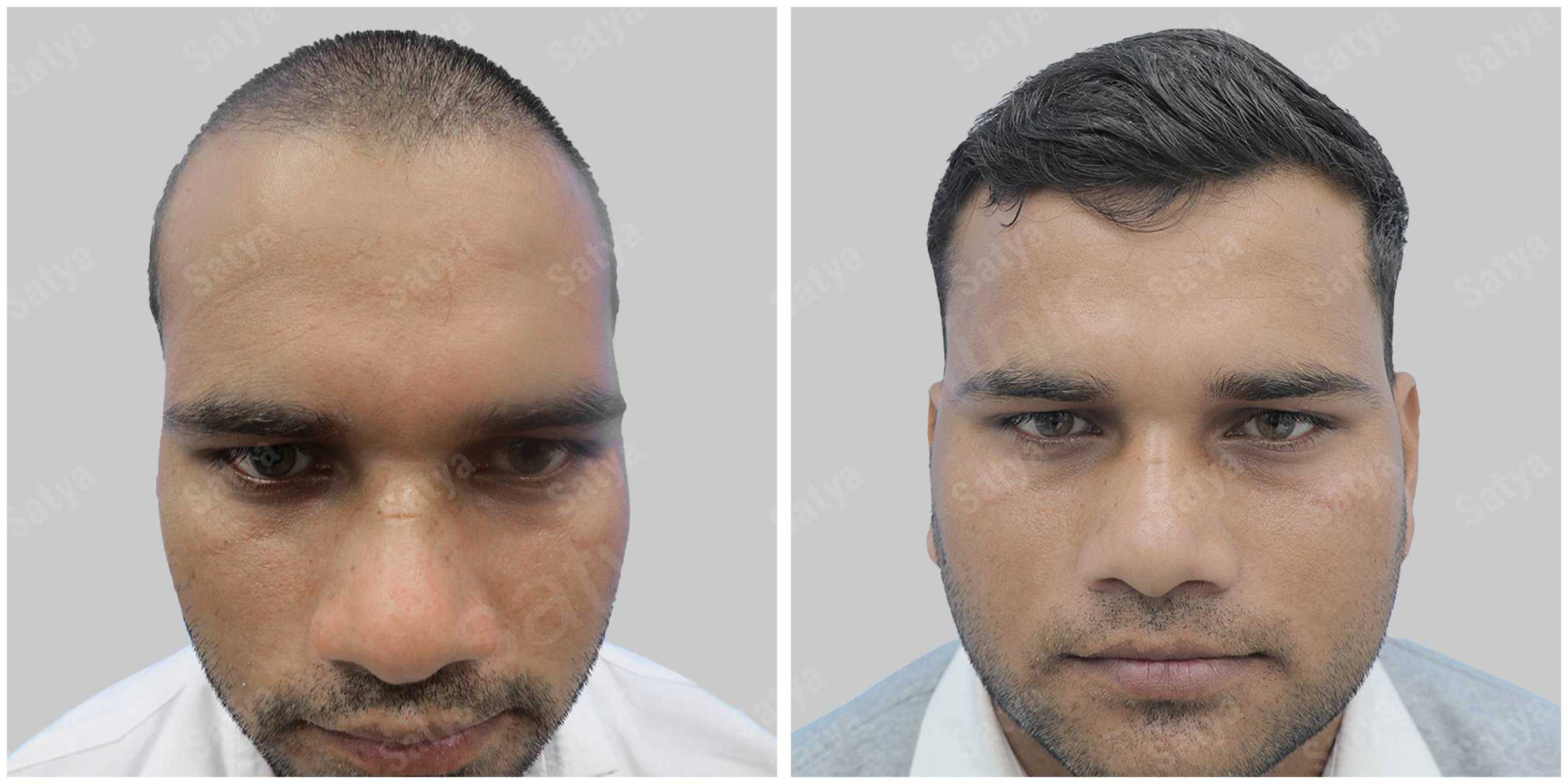Losing between fifty and one hundred hairs a day is typical. On the other hand, when that number rises, it may affect your hairline and crown and result in thinning or even total loss across the scalp.
Before attempting to treat hair loss, it’s critical to identify the underlying reason, which can be brought on by a variety of factors such as genetics, hormonal changes, stress, disease, and certain drugs.
Treatment options vary depending on the type of hair loss you are experiencing, such as alopecia areata and male and female pattern baldness.
Many people find hair loss distressing, as it can negatively impact their confidence and sense of self. However, several hair growth treatment are accessible. Medication, hair transplants, and lifestyle modifications are some of these treatments.
Finasteride is a common medicine that is frequently recommended to bald men. Read more about this medicine in our Finasteride for Hair Loss guide.
How does Finasteride work?
The hormone known as dihydrotestosterone (DHT) is formed from testosterone, which is generated by the adrenal glands and testes. The development of male sexual traits like facial hair, voice deepening, and muscle growth is attributed to DHT. However, excessive DHT causes hair follicles to shrink and finally stop generating hair in those who have androgenic alopecia, often known as male pattern baldness.
Finasteride functions by preventing testosterone from being converted to DHT. Finasteride can aid in reversing the effects of hair loss and encouraging hair growth in men by decreasing DHT levels.
Finasteride is used to treat benign prostatic hyperplasia (BPH), a condition in which the prostate gland enlarges and causes urinary issues, in addition to its impact on hair loss. By lowering DHT levels, finasteride can reduce the size of the prostate gland and alleviate urinary symptoms.
Can hair grow back by finasteride?
According to clinical research, finasteride may be a useful treatment for male pattern baldness. Compared to a placebo, finasteride was found to significantly boost hair regrowth in a randomized, placebo-controlled study involving 1,553 males with androgenic alopecia.
Finasteride success rates for hair restoration do differ based on how severe your hair loss is. Finasteride generally works best for mild to moderate hair loss that has caused crown thinning and hairline regression. Finasteride might not be effective for you if you have lost all of the hair on your scalp; alternatively, you might need to take medication to keep the hair on your sides and back intact so that surgery can be conducted.
Finasteride's effectiveness may be affected by several circumstances, including:
- Age
- The degree of your hair loss
- How long have you been experiencing hair loss?
- How closely do you adhere to the treatment guidelines?
Results may not show up for up to a year while using finasteride, and it is most effective when used continuously for at least six to twelve months. It’s crucial to remember that finasteride cannot treat hair loss caused by autoimmune diseases, chemotherapy, or dietary deficiencies.
What possible side effects does finasteride have?

Like any drug, finasteride may have adverse effects on certain individuals. Sexual dysfunction is the most often reported negative effect of finasteride. This includes reduced sperm volume, erectile dysfunction, and libido.
More than one in a hundred people may experience these adverse effects, but they normally go away when the medicine is discontinued.
Finasteride’s side effects may also include redness, breast enlargement, and discomfort. These are less frequent side effects that normally go away when the medicine is stopped.
Rarely, severe allergic responses to finasteride might include breathing difficulties and swelling of the lips, tongue, cheeks, or neck. See your physician right away if you get any of these side effects after taking finasteride.
It is not advised for women to take finasteride because it can result in birth abnormalities if taken during pregnancy. Finasteride pills that have been broken or crushed should not be touched by women who are pregnant or may become pregnant, as the drug can enter the fetus through the skin and harm it. Furthermore, semen might carry this drug, so if you are actively trying to conceive, speak with your doctor beforehand.
Consult a healthcare provider about any medications or medical conditions you may have before starting Finasteride treatment. Finasteride may not be safe for people with specific medical conditions since it can interact with certain drugs, including alpha-blockers and some antibiotics.
Before using finasteride, what should I know?
- You must discuss the possible dangers and advantages of Finasteride with your doctor before starting the medication. Finasteride is normally taken once a day, with or without food, as a tablet.
- One milligram per day is the suggested dosage for male pattern baldness; however, this may change based on personal circumstances. Never exceed the dosage that is recommended.
- Taking the prescription at the same time every day, refraining from alcohol and recreational drugs, and leading a healthy lifestyle that includes regular exercise and a balanced diet may all help decrease the chance of side effects.
- To sustain hair regrowth, long-term finasteride treatment may be required. However, it’s crucial to keep an eye out for any possible adverse effects or changes you encounter while using finasteride. Sometimes, if a treatment is ineffective or has too many adverse effects, you may need to change to a new one or increase your dosage.
- It’s crucial to schedule routine check-ups with your physician to discuss any concerns or side effects and to assess how well finasteride is working for you. Never stop taking something or raise the dosage.
For any inquiries or to make an appointment for a hair transplant in Delhi, please use the number or email provided. To learn more about our services and patient testimonials, please visit our website.
Book an appointment
Consultation

Repair

Blog

Galleries

Frequently Asked Questions
It may take several months to a year after beginning Finasteride before you notice any noticeable changes in your hair's growth. This is because, even with finasteride to help, your hair only grows about half an inch every month, making it difficult to notice advantages quickly.
Finasteride is not a treatment for hair loss, and quitting the drug could cause hair loss to revert to pre-medication levels.
It's been suggested that finasteride works best at promoting hair growth on the crown and less well at stimulating hair growth on the hairline. It may not work as effectively or may take longer to show effects, but that doesn't mean it can't increase hair growth around your hairline.
Long-term use of finasteride is thought to be safe. However, it is advised to monitor for adverse effects and effectiveness regularly, so you will need to see your doctor frequently to make sure it is still beneficial to your health. You can ask your doctor for advice on the best maintenance schedule based on your needs.
Additionally, you need to contact your doctor right away if you encounter any new or worrisome side effects while taking finasteride. Maintaining regular contact with your physician is essential to ensuring the efficacy and safety of finasteride as a treatment for hair loss.
To promote hair growth and stop additional hair loss, your doctor or surgeon may advise you to continue taking finasteride following a hair transplant treatment. This is a result of the hair transplant not stopping the progression of hair loss in scalp regions that are not addressed by it.
Maintaining Finasteride use may help stop the onset of male pattern baldness in some scalp areas.
It is crucial to go over with your physician or hair transplant surgeon the possible advantages and disadvantages of continuing to take Finasteride after the surgery. They may provide you with tailored advice about whether the medicine is suitable for your particular situation and assist you in selecting the best plan of action to keep your hair growing and stop further hair loss.
Because finasteride can harm a developing baby, it is not advised for women of childbearing age who may be pregnant or trying to conceive.
It is advised that women who are experiencing hair loss consult with their physician regarding safe treatment choices. Women may have hair loss due to a variety of reasons, such as hormone fluctuations, stress, and specific medical disorders. Therefore, before a treatment strategy is developed, the underlying cause of hair loss must be properly assessed.
Women suffering from hair loss may benefit from topical Minoxidil, low-level laser therapy, and certain vitamins as treatments. Together, you and your doctor can develop a personalized therapy plan that addresses your unique requirements and medical concerns.
Finasteride is just one of several hair loss treatment options; other alternatives include hair transplant surgery and minoxidil. Every treatment option has benefits and drawbacks, so you should discuss your options with your physician before selecting a course of action.
You must select a hair loss therapy that is tailored to your requirements, as what works for one person may not work for others.
One milligram of finasteride should be used daily to treat hair loss; however, you should always heed your doctor's dosage instructions.
You can take your medication with or without food, depending on the packaging's advice.
Benign prostatic hyperplasia (BPH), a condition in which your prostate gland enlarges, is another ailment for which finasteride is advised. By shrinking the prostate gland, finasteride helps lessen the symptoms of BPH associated with urination.
Several natural treatments have been proposed to treat hair loss, and many individuals who have lost their hair may attempt these before visiting a physician.
Among them are:
- spotted Palmetto
- Oil of rosemary
- Oil from pumpkin seeds
- Juice from onions
- Jojoba oil
- Verdant tea
- Coconut oil
There is, however, no proof that these complementary therapies can help you grow new hair. Make sure you contact your doctor before utilizing any natural remedies at all.
Results








